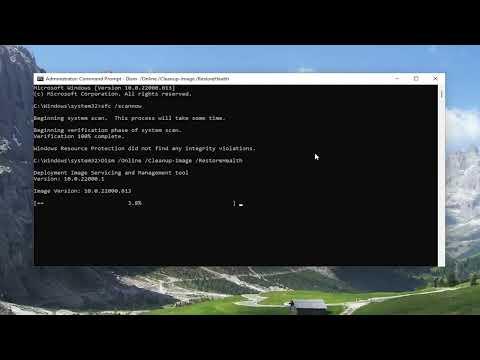I remember the first time I encountered a frozen Start Menu and Taskbar in Windows 11. It was incredibly frustrating. I was working on an important project when suddenly the Start Menu became unresponsive, and the Taskbar ceased to function. Everything I tried didn’t seem to help, and I felt a wave of panic wash over me. But through some trial and error, and a bit of research, I managed to restore functionality to both. If you’re facing a similar issue, I’m here to share the steps that worked for me.First and foremost, my initial reaction was to restart my computer. Often, a simple reboot can solve minor glitches and issues in Windows. I clicked on the Power button at the bottom right corner of my screen, selected “Restart,” and waited for the system to reboot. To my dismay, the problem persisted even after the restart. It was clear that this was not a run-of-the-mill issue and required a deeper dive into troubleshooting.Next, I decided to try restarting Windows Explorer. This process involves closing and reopening the Windows Explorer process, which manages the Start Menu and Taskbar. To do this, I pressed “Ctrl + Shift + Esc” to open Task Manager. I found Windows Explorer in the list of processes, right-clicked on it, and selected “Restart.” The screen flickered briefly as Windows Explorer restarted, but unfortunately, this didn’t solve the issue either.Realizing that the problem might be more deeply rooted, I moved on to checking for Windows updates. Sometimes, bugs and glitches are addressed in updates, and installing the latest patches might resolve the issue. I navigated to “Settings” by pressing “Win + I,” then went to “Update & Security,” and clicked on “Check for updates.” Windows began searching for any available updates. While waiting, I hoped that an update might be available and could resolve the problem. After checking, I found that my system was up-to-date. No new updates were available, so I had to look for other solutions.The next step I took was to run the System File Checker tool. This tool scans for and repairs corrupted system files that might be causing issues. I opened the Command Prompt with administrative privileges by right-clicking the Start Menu and selecting “Windows Terminal (Admin).” In the Command Prompt window, I typed the command “sfc /scannow” and pressed Enter. The system began scanning for corrupt files. It took a while, but once it completed, it found and fixed some issues. I restarted my computer again, but the Start Menu and Taskbar were still unresponsive.Determined to find a solution, I decided to reset the Windows Store cache. Sometimes, issues with the Windows Store can cause problems with the Start Menu and Taskbar. I pressed “Win + R” to open the Run dialog box, typed “wsreset.exe,” and pressed Enter. A Command Prompt window opened and ran a series of commands. After a few moments, the window closed, and I restarted my computer. Although the cache was reset, the issue remained unresolved.As a next step, I tried creating a new user account. This can help determine if the problem is user-specific or system-wide. I went to “Settings,” selected “Accounts,” and then “Family & other users.” I clicked on “Add someone else to this PC” and followed the prompts to create a new user account. Once the new account was created, I logged in with it. To my relief, the Start Menu and Taskbar worked perfectly under the new account. This indicated that the problem was likely tied to my original user profile.To address the issue with my original profile, I performed a System Restore. This process restores Windows to a previous state before the issue occurred. I accessed the System Restore utility by searching for “Create a restore point” in the Start Menu, selecting it, and then clicking on “System Restore.” I followed the on-screen instructions to choose a restore point before the issue started. The system began the restore process, which took some time. Once completed, I restarted my computer, but the problem persisted.At this point, I decided to use the Windows PowerShell to attempt a repair of the Start Menu and Taskbar. I opened Windows Terminal as an administrator again and ran the command “DISM /Online /Cleanup-Image /RestoreHealth.” This command checks and repairs the Windows image. After the process was complete, I restarted my computer, but the problem continued.Ultimately, after trying various solutions, I realized that the issue was likely due to a deeper system corruption or configuration error. As a final resort, I opted to reset Windows 11 while keeping my files. This option reinstalls Windows while preserving personal files, though it removes installed apps and settings. I went to “Settings,” selected “System,” then “Recovery,” and clicked on “Reset PC.” I chose the option to keep my files and followed the prompts. The reset process took a while, but when it was finished, the Start Menu and Taskbar were functioning properly again.Restoring a frozen Start Menu or Taskbar in Windows 11 can be a challenging process, but with patience and persistence, I was able to resolve the issue. From restarting the computer and restarting Windows Explorer to using System File Checker and performing a system reset, each step brought me closer to a solution. If you encounter a similar problem, I hope these steps help you as much as they helped me.
How To Restore A Frozen Start Menu Or Taskbar In Windows 11 [Tutorial]
